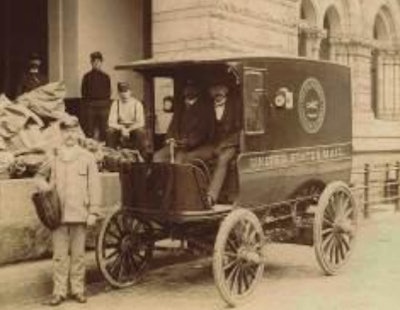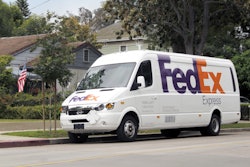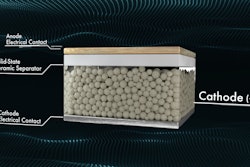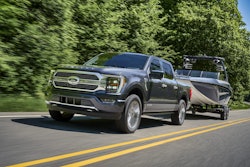
While big companies like Amazon often won’t reveal all their cards concerning new technology, like commercial electric vehicles, sometimes they’ll throw out an interesting bone or two.
It still doesn’t make up for unanswered EV questions like contingency plans for power outages, battery lifecycle management (including battery sourcing), charging preferences (fast-charge vs. a slow, overnight charge) and EV towing capabilities.
These questions certainly won’t go away and will only grow in stature as more commercial EVs take to the streets.
Speaking of which, Amazon has been doing a lot of buzzing around in all-electric delivery vehicles.
“Last year alone, Amazon delivered more than 20 million packages to customers in electric delivery vehicles across North America and Europe,” Amazon sustainability PR head Alexandra Miller said.
Okay, that’s impressive. Twenty million packages delivered by EVs last year. You can bet that Amazon has amassed a lot of data surrounding delivery van performance. But relax. They’re not sharing much.
[Related: Pros and cons of commercial electric vehicles]
While the pressure is on to quickly save the planet from emissions, (Climateclock.world has a carbon countdown to disaster. You’ve got nearly 7 years left to stock up on toilet paper), turning that venture into a team effort often falls flat. The race to become a net-zero carbon company seems to frequently trump cooperative efforts to save the planet (and I suppose we could throw in humanity as a goodwill gesture.)
I'm not faulting companies for holding back on sharing EV intel. It's just interesting to note that this rising battle cry to save the world from emissions--reminiscent of nations and companies rallying around a common enemy like the Axis powers in World War II--has its limits which suggests that a good number of folks are feeling a little more optimistic about this carbon countdown than others. In other words, there's still time to remain competitive, buy more toilet paper and keep things close to the vest like most companies do.
“Hey Brian? How are you charging during off-peak times? Does that ever affect vehicle availability?”
Brian contemplates his Converse, clears his throat and shakes his head: “Sorry dude. Company’s getting really tight-lipped about stuff like that. Seriously. I think our boss likes Elon’s approach and may do away with our PR team all together. He’s like some cutting edge guru now with encrypted Tweets like, ‘Buy Teddy Coin.’ I still don’t know what that means. Teddy Ruxpin? Teddy Roosevelt? I mean, there’s no such thing as Teddy Coin anyway. Right? Am I right? Or is there? I don’t know, man. This stuff is happening so fast.”
 Did anyone tell California about this? According to the carbon clock above, the state's deadline for all-electric trucks and vans in 2045 could prove to be too little, too late.Climateclock.world
Did anyone tell California about this? According to the carbon clock above, the state's deadline for all-electric trucks and vans in 2045 could prove to be too little, too late.Climateclock.world
So while the best information on commercial EVs may be scarce, it’s still there if you know where to look. Thanks to the willingness of a few fleets and OEMs, we’ve published EV performance stories at Hard Working Trucks and Commercial Carrier Journal. Of course, it would be helpful if additional fleets and manufacturers stepped forward to take on important questions that may help guide others in their decision-making and, as some portend, spare the planet from carbon-infused damnation.
[Related: Charging infrastructure better than we think?]
In the interim, we’ll just have to go with whatever tidbit comes down the tube. In this case, though my biggest EV questions went unanswered, Miller did drop an interesting clue about Amazon’s approach to the ongoing concerns of emissions and EV range limitations.
“We are building delivery stations closer to customers that reduces our delivery distance, and in turn our carbon footprint,” she said.
That’s dedication! Who knows? Maybe Amazon will one day have a series of underground tunnels where electric conveyors or vacuum tubes deliver packages that will shoot up at various kiosks like brown sugar, cinnamon Pop-Tarts.
In all seriousness, the idea of smaller delivery stations versus massive warehouses is intriguing beyond Amazon’s goal of curbing emissions. It’s like the Honeycomb Hideout versus the Death Star, the former being more of a cozy, cool and productive safe haven versus a cutthroat, cubicle empire where, “You’re just a number, Johnny.”
At least Amazon’s talking. I think Tesla’s PR team may be sequestered on Mars with a team-building exercise for all ages: “Okay people. Elon left us with a roll of aluminum foil, duct tape and his old Archer walkie-talkie. Our first PR announcement has to go out in—what’s the climate clock say?—oh yeah, in 6 years, 282 days and 21 hours. Mars is going to be booming then people. Red is the new green."









